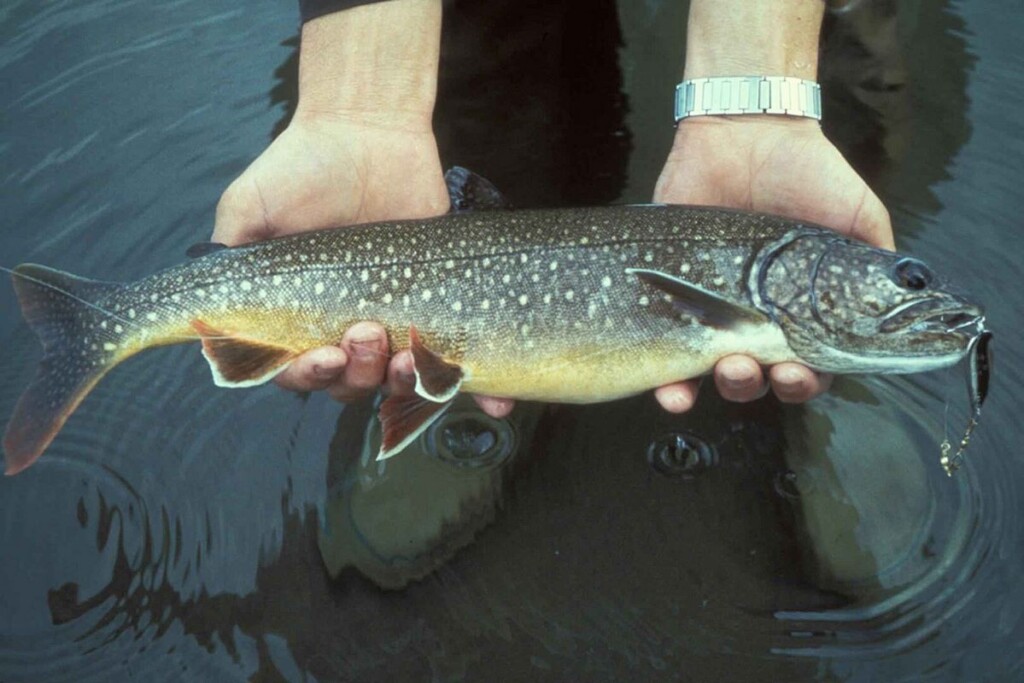
Through a combination of invasive species control and stocking with captive-raised fish, it’s now believed that a self-sustaining and harvestable population of lake trout has returned to Lake Champlain.
Following this historic success, a decision has been made to suspend the stocking of the lake, believing wild-born, wild-grown trout will be able to survive and spawn to adulthood without human assistance.
The decision was announced by the Lake Champlain Fish and Wildlife Management Cooperative—a working group from the three state and federal agencies—at its annual meeting on April 10th, 2025, and represents the culmination of 50 years of conservation work.
“It’s kind of dismaying how rarely we get to declare ‘job done,’ because often there are things we can’t overcome like habitat damage or invasive species,” Ellen Marsden, a University of Vermont fisheries scientist and the region’s leading lake trout expert, said Tuesday. “This is one of those quite rare events. It was rapid and obviously successful.”
The cooperative will stock trout once more this spring, then continue to assess the health of the population and prepare a plan that includes benchmarks for reinstituting stocking if wild lake trout numbers appear to be declining.
Adirondack Explorer wrote of the decision that it puts the cooperative in uncharted waters, with no previously-successful effort of its kind to look to for direction. Lake trout can live for 30 years, so effects on the population from these kinds of management decisions will take time to manifest.
“It’s a new and exciting situation for us to be in,” Rob Fiorentino, DEC Region 5 fisheries supervisor, said in an interview last year according to the Explorer. “There’s nothing really written for us to work off.”
Stocking began back in 1972, but controlling sea lamprey started 18 years later. Sea lamprey is an invasive parasitic species that preys on the fish.
While stocking was critical given losses to sea lamprey, successful re-establishment of a wild lake trout population would not have been possible without strong measures to control the invasive species.
MORE NATIVE FISH STORIES: Endangered Pupfish Found Only in a Death Valley Cave Springs Back to Life in Numbers at 25-Year High
Native to the Atlantic Ocean, lamprey play an important role in ocean and coastal river ecosystems but cause havoc when they invade inland waters with no natural predators. Lamprey latch onto fish like lake trout and feed off their bodily fluids, seriously harming or killing the hosts.
The Fish and Wildlife Service’s lamprey control program is multifaceted and includes adding physical barriers to rivers and streams entering Lake Champlain; applying lampricides that target and kill larval sea lamprey before they prey on fish; and trapping and removing adults before they can spawn.
After reaching a high of 99 sea lamprey woundings per 100 lake trout in 2006, the rate dropped to 23 per 100 in 2022. The wounding rate has hovered around the cooperative’s target of 25 for the last two years.
NORTH AMERICAN WATERS: Number of Fish on US Overfishing List Reaches All-Time Low–Led by Mackerel and Snapper
Continued control of this invasive species will support restoration of other native fish species and sustain a thriving recreational lake trout fishery that bolsters local economies. For every $1 invested in the sea lamprey control program, $3.50 is returned to the economy, of which over $450 million is derived from commercial fishing each year on the lake.
“The Service is proud to be a partner in this cooperative and of our contributions towards improving conditions to restore this native species in Lake Champlain,” said Wendi Weber, regional director for the US Fish and Wildlife Service in the Northeast Region. “It’s exciting to see the return on investments in the sea lamprey program, by rebuilding an important recreational fishery and supporting the regional economy.”
SHARE This Wonderful Win For Water-Based Conservation In America…
